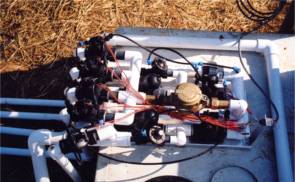Wastewater Subsurface
Drip Distribution
Research Project
Drip Distribution Dosed with Septic Tank Effluent versus Secondary Quality Effluent
Overview
The project will include a pair of identical drip dispersal systems
that will share the same location and wastewater supply. One
system will apply septic tank effluent and the second will apply water that
has been treated to secondary water quality standards. Each system
will consist of a control system (with appropriate filtration), dose tank
and approximately 1000 feet of drip tubing. Before installation,
the emitters will be checked for uniformity, and the soil will be analyzed
to determine the saturated hydraulic conductivity and any redoximorphic
features will be documented. Wastewater will be applied at the design
rate. The major parameters that will be analyzed are BOD, COD, TOC,
nitrogenous compounds, and total Phosphorous.
The major benefit of the research will be the determination as
to whether secondary treatment is needed before wastewater is applied
to the soil by a drip dispersal system. By not having to invest
in advanced treatment technologies, the cost of building new homes
and businesses in economically depressed areas will be reduced.
A secondary benefit is a better understanding of the benefits
and problems of using drip irrigation techniques to apply wastewater
to the soil. The lessons learned during this project will
be addressed during training sessions sponsored by the CDWM.
Project Update
The project is now underway. A site has been selected for the installation of the two drip dispersal systems. The Consolidated Utility District is allowing the installation of the two drip systems in a subdivision located near Murfreesboro, TN. The subdivision is using a recirculating sand filter and a drip dispersal field to treat and dispose of its wastewater.
The site has been surveyed and is awaiting a soil survey. The next step will include installing a weather station at the site and to utilize ground penetration radar (GPR) technology to conduct an initial survey of the subsurface.
The CDWM staff is currently in the laboratory measuring the uniformity of the emitters that will be installed at the site. Once the project has begun, on a monthly basis, a small segment of dripperline will be removed and replaced. The emitters will be taken back to the laboratory and evaluated for any reduction in emission rate.
Project Pictures
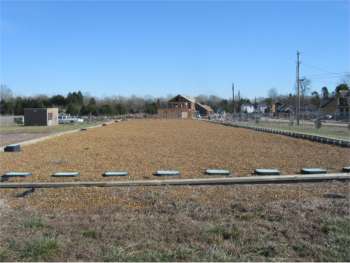
Selected site with recirculating sand filter
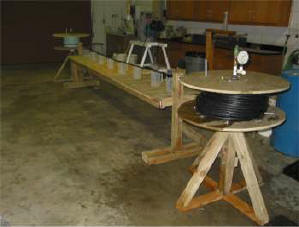
Test stand for measuring the flow rate of each emitter
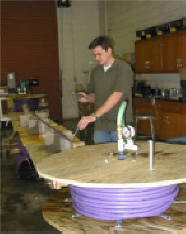
Student staff measuring water temperature
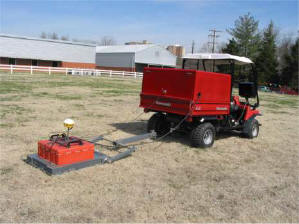
The GPR unit will be pulled across the research field as it analyzes the subsurface
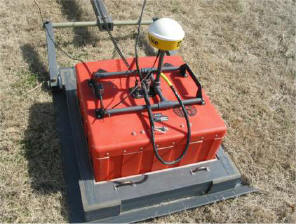
GPR equipment that will be used to track the horizontal flow of water

